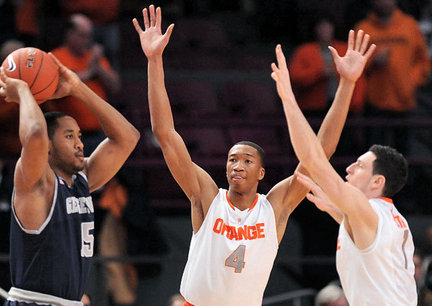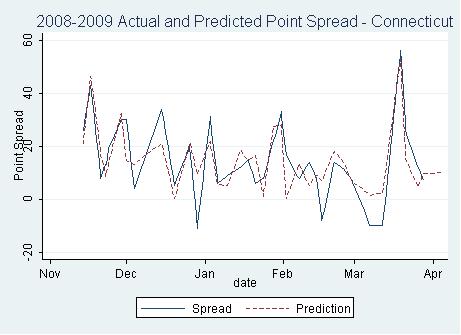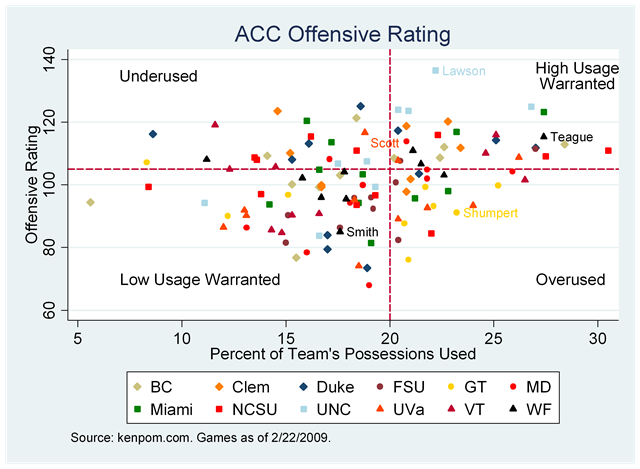Behind the Numbers: The Counterintuitive Result of the Syracuse Zone
Posted by KCarpenter on December 8th, 2010Kellen Carpenter is an RTC contributor.
While theoretically, the intricacies of basketball should provide for a near-infinite array of offensive and defensive strategies, we instead see a surprisingly few varieties of essential approaches. On the defensive end, simple man-to-man defense is the primary defense of the vast majority of college basketball teams. Other types of defense are less common, but the clear runner-up in terms of defensive schemes is 2-3 zone defense, which is usually what TV and radio people mean when they say “zone defense.” More specifically, when radio and television people refer to “the zone” they probably mean the version of it that is run by Jim Boeheim in Syracuse, and with good reason.
It takes only the mildest interest in college basketball to know that Syracuse under Jim Boeheim has been a perennial contender for the national championship. Year in and year out, the young men in orange appear ready to take all comers each and every March. And aside from the constants of Boeheim himself and a steady flow of NBA-caliber talent, the other constant is the zone. Boehim isn’t just an accomplished practitioner of the zone, but a certified guru. His mastery of this defensive system and ability to impart that system to others has made him a coach in demand. When Mike Kryzewski needed a coach to teach the US Olympic team about the zone, Boeheim was the natural choice. The curmudgeonly coach, Syracuse, and the zone have merged into a monolithic juggernaut that seem destined to befuddle under-prepared offenses come tournament time. As such, the question of how to execute zone defense effectively isn’t as interesting to most teams as how to overcome it.
Now, on the topic of attacking a zone, I don’t have the benefit of the advice of smart scouts, assistant coaches, and the strategic gurus who are working hard to win their respective teams’ games. Instead, I get the second-hand advice of guys who are on television and radio, ex-coaches and ex-players, and the most pernicious and dangerous of strategic advisers, basketball writers. These folks tend to repeat, in unison, some familiar refrains. It’s almost inevitable that when I hear or read someone talk about the zone, they mention the same weaknesses: vulnerabilities to perimeter scoring and offenses that run through the high post. It’s what they seem to say almost every single time, and that’s fine. These approaches make sense when you watch the ball move against the zone: the ball is passed into a player at the high post, sucking in defenders from the perimeter or near the goal, and opening up either a three-pointer from the corner or a quick pass to a baseline-cutter making a move to the basket. So, a solid piece of conventional wisdom, right?
Well, maybe not. The mind is a funny thing, prone to remember triumphs more clearly than failures and generally to overestimate probabilities and degrees of success. Fortunately, even if our subjective memory and evaluation of past events isn’t reliable, we always have the box scores to turn to, and to those we shall turn. If the advice of the pundits and analysts is accurate, teams that run the zone defense should expect to have their opponents make three-point shots against them at a pretty good clip.


















































